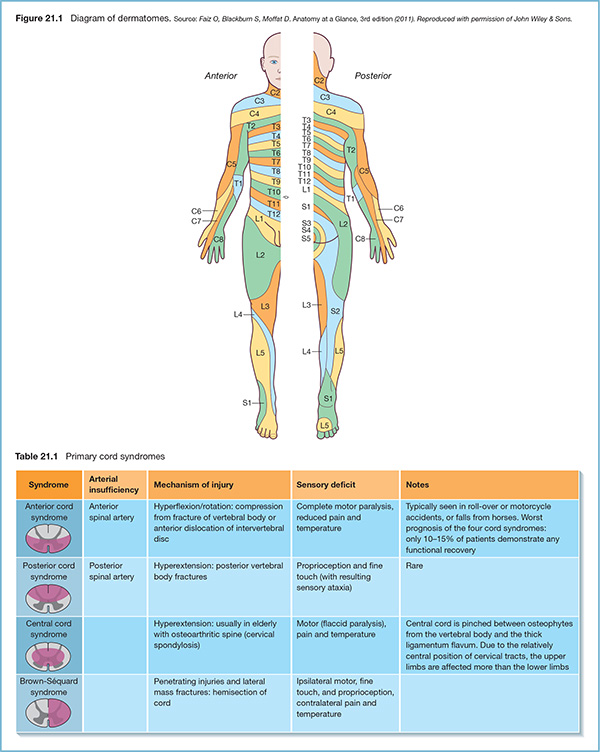21 Spinal cord injuries (SCI) can have a devastating impact on long-term mobility and independence. The most commonly affected group are young males between 16 and 30 years old, as they are most likely to be the victims of trauma. Road traffic collisions account for half of all SCI. However, the ageing population means that rising numbers of active elderly people are becoming involved in trauma and are particularly vulnerable to SCI. This is because of comorbidities such as osteoporosis, osteoarthritis of the spine and cervical spondylosis. As a result, SCI are a growing problem with an increasingly diverse demographic picture. The spinal column functions to support the upper body as well as to protect the spinal cord. There are 33 vertebrae which surround the cord: 12 thoracic, 7 cervical, 5 lumbar, 5 sacral, and 4 coccygeal (fused) vertebrae. These are supported by intervertebral discs and ligaments. The cord itself runs within the spinal canal from the foramen magnum at the base of the brainstem to the level of L1 in adults, below which the canal is occupied by the cauda equina. The spinal cord is made up of various tracts, some afferent, others efferent, which branch off to give sensory and motor innervation to specific dermatomes and myotomes, respectively. As well as sensory and motor nerves, the cord also contains autonomic nerve fibres: the sympathetic fibres originate between T1 and L3, and the parasympathetic between S2 and S4. There are four main mechanisms of blunt injury: hyperflexion, hyperextension, rotation and compression. These may be seen in high-speed road traffic collisions or sporting incidents.
Spinal injuries

Anatomy of the spine and cord
Pathophysiology of cord injury
![]()
Stay updated, free articles. Join our Telegram channel

Full access? Get Clinical Tree








